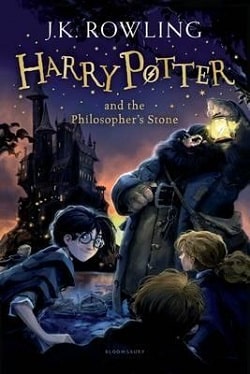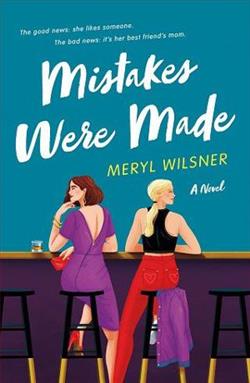“But every public character has a private life also. That was my mistake, I forgot the private life. There existed private reasons for killing Morley—Frank Carter’s for instance.
“There could also exist private reasons for killing you … You had relations who would inherit money when you died. You had people who loved and hated you—as a man—not as a public figure.
“And so I came to the supreme instance of what I call ‘the forced card.’ The purported attack upon you by Frank Carter. If that attack was genuine—then it was a political crime. But was there any other explanation? There could be. There was a second man in the shrubbery. The man who rushed up and seized Carter. A man who could easily have fired that shot and then tossed the pistol to Carter’s feet so that the latter would almost inevitably pick it up and be found with it in his hand….
“I considered the problem of Howard Raikes. Raikes had been at Queen Charlotte Street that morning of Morley’s death. Raikes was a bitter enemy of all that you stood for and were. Yes, but Raikes was something more. Raikes was the man who might marry your niece, and with you dead, your niece would inherit a very handsome income, even though you had prudently arranged that she could not touch the principal.
“Was the whole thing, after all, a private crime—a crime for private gain, for private satisfaction? Why had I thought it a public crime? Because, not once, but many times, that idea had been suggested to me, had been forced upon me like a forced card. …
“It was then, when that idea occurred to me, that I had my first glimmering of the truth. I was in church at the time and singing a verse of a psalm. It spoke of a snare laid with cords….
“A snare? Laid for me? Yes, it could be … But in that case who had laid it? There was only one person who could have laid it … And that did not make sense—or did it? Had I been looking at the case upside down? Money no object? Exactly! Reckless disregard of human life? Yes again. For the stakes for which the guilty person was playing were enormous. …
“But if this new, strange idea of mine were right, it must explain everything. It must explain, for instance, the mystery of the dual nature of Miss Sainsbury Seale. It must solve the riddle of the buckled shoe. And it must answer the question: Where is Miss Sainsbury Seale now?
“Eh bien—it did all that and more. It showed me that Miss Sainsbury Seale was the beginning and middle and end of the case. No wonder it had seemed to me that there were two Mabelle Sainsbury Seales. There were two Mabelle Sainsbury Seales. There was the good, stupid, amiable woman who was vouched for so confidently by her friends. And there was the other—the woman who was mixed-up with two murders and who told lies and who vanished mysteriously.
“Remember, the porter at King Leopold Mansions said that Miss Sainsbury Seale had been there once before….
“In my reconstruction of the case, that first time was the only time. She never left King Leopold Mansions. The other Miss Sainsbury Seale took her place. That other Mabelle Sainsbury Seale, dressed in clothes of the same type and wearing a new pair of shoes with buckles because the others were too large for her, went to the Russell Square Hotel at a busy time of day, packed up the dead woman’s clothes, paid the bill and left. She went to the Glengowrie Court Hotel. None of the real Miss Sainsbury Seale’s friends saw her after that time, remember. She played the part of Mabelle Sainsbury Seale there for over a week. She wore Ma
belle Sainsbury Seale’s clothes, she talked in Mabelle Sainsbury Seale’s voice, but she had to buy a smaller pair of evening shoes, too. And then—she vanished, her last appearance being when she was seen reentering King Leopold Mansions on the evening of the day Morley was killed.”
“Are you trying to say,” demanded Alistair Blunt, “that it was Mabelle Sainsbury Seale’s dead body in that flat, after all.”
“Of course it was! It was a very clever double bluff—the smashed face was meant to raise a question of the woman’s identity!”
“But the dental evidence?”
“Ah! Now we come to it. It was not the dentist himself who gave evidence. Morley was dead. He couldn’t give evidence as to his own work. He would have known who the dead woman was. It was the charts that were put in as evidence—and the charts were faked. Both women were his patients, remember. All that had to be done was to relabel the charts, exchanging the names.”
Hercule Poirot added:
“And now you see what I meant when you asked me if the woman was dead and I replied, ‘That depends.’ For when you say ‘Miss Sainsbury Seale’—which woman do you mean? The woman who disappeared from the Glengowrie Court Hotel or the real Mabelle Sainsbury Seale.”
Alistair Blunt said:
“I know, M. Poirot, that you have a great reputation. Therefore I accept that you must have some grounds for this extraordinary assumption—for it is an assumption, nothing more. But all I can see is the fantastic improbability of the whole thing. You are saying, are you not, that Mabelle Sainsbury Seale was deliberately murdered and that Morley was also murdered to prevent his identifying her dead body. But why? That’s what I want to know. Here’s this woman—a perfectly harmless, middle-aged woman—with plenty of friends and apparently no enemies. Why on earth all this elaborate plot to get rid of her?”
“Why? Yes, that is the question. Why? As you say, Mabelle Sainsbury Seale was a perfectly harmless creature who wouldn’t hurt a fly! Why, then, was she deliberately and brutally murdered? Well, I will tell you what I think.”
“Yes?”
Hercule Poirot leaned forward. He said:
“It is my belief that Mabelle Sainsbury Seale was murdered because she happened to have too good a memory for faces.”
“What do you mean?”
Hercule Poirot said:
“We have separated the dual personality. There is the harmless lady from India. But there is one incident that falls between the two roles. Which Miss Sainsbury Seale was it who spoke to you on the doorstep of Mr. Morley’s house? She claimed, you will remember, to be ‘a great friend of your wife’s.’ Now that claim was adjudged by her friends and by the light of ordinary probability to be untrue. So we can say: ‘That was a lie. The real Miss Sainsbury Seale does not tell lies.’ So it was a lie uttered by the impostor for a purpose of her own.”
Alistair Blunt nodded.
“Yes, that reasoning is quite clear. Though I still don’t know what the purpose was.”
Poirot said:















